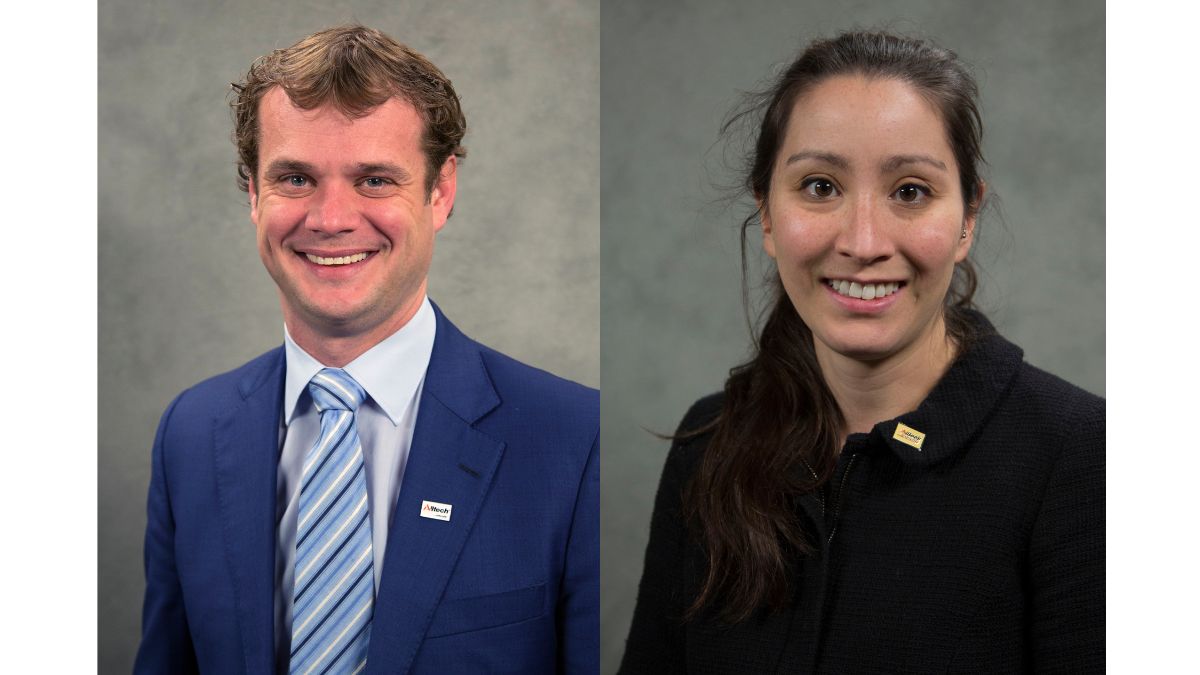Meeting the demands of sustainability
Consumers are increasingly demanding proof of sustainability, but many producers are struggling to meet these expectations. Failure to demonstrate efforts could lead to a loss of consumer trust and, ultimately, reduced revenue. Erica Lain, sustainability manager at Iowa Select Farms, joins the Ag Future podcast to share insights on the measures producers need to take to meet the growing demand for sustainability.
The following is an edited transcript of the Ag Future podcast episode with Erica Lain hosted by Tom Martin. Click below to hear the full audio or listen to the episode on Apple Podcasts, Spotify or Google Podcasts.
Tom: Welcome to Ag Future, presented by Alltech. Join us from the 2022 Alltech ONE Conference as we explore opportunities within agri-food, business and beyond.
Sustainability is now the standard for the animal protein industry, not the exception. How has the global demand for sustainability affected the pork industry?
I'm Tom Martin for the Alltech Ag Future podcast series. Erica Lain is here with me to address that question and more. Erica is the sustainability manager at Iowa Select Farms, where she oversees all of Iowa's farm sustainability efforts and projects and also generates the company's select care commitment report. Welcome, Erica.
Erica: Thank you. Thank you for having me on today. It's a pleasure to be here with you.
Tom: We're glad you're here. Let's start with that question. Everybody's talking about sustainability. How about the pork industry?
Erica: The pork industry, we have always been sustainable. We don't need to necessarily change anything that we're doing, because over many, many years, we have been adaptive to consumer demands and ever evolving with things that we do, looking at new technologies and how to be more efficient. That is ultimately what sustainability is. But consumers are wanting proof and wanting to be told that it's okay to eat our product and that it is sustainable. What pork producers need to do is to compile this information and provide that proof that they [the consumers] are ultimately wanting and [the consumers can] feel good about eating our product because it is a sustainable product. We need to be able to tell our story.
Tom: In formulating a business plan, sustainability should be a primary influence all the way through, right?
Erica: Yes, absolutely. That's exactly how Iowa Select Farms views sustainability. It is our business plan. You never want to separate efficiency and sustainability. They should both work together.
Tom: I think many of us, when we hear the word sustainability, we automatically relate it to the environment.
Erica: Yes.
Tom: But does the concept of sustainability have to do with environmental considerations, or does it apply to all aspects of the operation?
Erica: That's a great question and something that I'm very passionate about. At Iowa Select Farms, we view sustainability as a more holistic approach. Our four core values that we live by every single day are people care, animal care, environment care, and community care. That is how we have established our foundation of our sustainability report, understanding that we need to take care of our people, our animals, steward our natural resources, and give back to our communities. When we compiled our first SelectCare Commitment Report, we wanted to make sure that we were highlighting all four of those areas.
Tom: Let's say Farm A wants to implement sustainable practices but they're not sure where to start with that. What should be a priority in establishing a sustainability program?
Erica: When we first looked at wanting to start our sustainability program – which was actually just last summer, so it's very new to us as well around measuring this and talking about it – I think the number one thing that we all need to understand is the foundation of it and where do you think your business is going to go for the next 30 years, so understanding that and utilizing the resources that you have available to you. For us at the National Pork Board, they provide on-farm sustainability reports. It helps us provide third-party verification to tell our story to an external audience with factual information to back it up. I also think it's very important to take credit for what we're already doing. Understand that retention rate in your company, take credit for that. Or take credit for that big asset of hog manure that pig producers can provide to farmers throughout the states. I think understanding what we're already doing and taking credit for that is an initial step, and then identify areas where you can improve your business plan that aligns with sustainability, and outline that moving forward.
Tom: Well, demand for sustainability is no longer the exception. It's the norm. I just wonder: from your perspective, what does this mean for the future of agriculture?
Erica: A lot of opportunities. I think this is a way for pork producers to ultimately sell their product to consumers. Have them understand that we look at all these aspects within our company. We want to be efficient. We want to be sustainable. We want to steward our natural resources and give back to our communities; that's in our hearts. That's what we do every single day. This platform ultimately allows us to tell that story to an external audience. Also to be transparent and identify areas where we can improve our system and our production, and identify that, and say, We are going to be transparent: we need to improve on this, but we've got goals and we've got operations and systems in place to improve on those topics.
Tom: Trust is really key. What do you consider essential to building that, or gaining that trust in the consumer?
Erica: When I think about trust in regular relationships, it's building that relationship with the consumer, ultimately allowing them to feel good about what they're consuming. Building that trust is providing proof. When we think about trust, you want to give the principles and the SOPs and what we do every single day, but we also want to show them the proof. There's a lot of opportunities out there to show proof through third-party verification, through audit systems, through different third-party companies that can give you that proof to tell your story to an external audience.
Tom: What are you seeing going on right now? This is kind of under the label of trends and innovations of interest, but what's going on that captures your attention?
Erica: I think it's really interesting how consumers are really interested in what we do every single day. I mean, ultimately, this is what pork producers want, is for people to better understand what we're doing. Rather than just putting us aside and saying, Well, we don't care what they're doing, we don't want to know, we're going to go a different route, but giving us that opportunity to tell our story and to tell them that we are sustainable. Iowa Select Farms has been in production for 30 years this year. That's a great story to tell, of how we've evolved over time in the steps that we've implemented over the last three years to be the largest pork producer in Iowa today. For us, outlining what we're going to do in the next 30 years is critical for our business, but ultimately having the consumer allow us to tell that story and to give us that opportunity to sell our product to them.
Tom: You are quoted in a company newsletter saying that you truly didn't understand how much of a positive impact being involved in agriculture had until recently, when you and your husband welcomed your son into the world. Tell us about that realization.
Erica: I grew up on a row-crop and cow-calf operation. Now my husband and I farm in Southern Iowa on the same scenario: a row-crop, beef-cattle, cow-calf operation. I have grown up with agriculture my entire life. I went to school and studied animal science. But seeing agriculture impact my son – seeing him excited to sit in a tractor – it truly exemplifies the passion that will ultimately grow up with him throughout his lifetime on the farm. Looking back, I didn't realize all of the life skills that agriculture has taught me and the huge impact agriculture has on the economy and ultimately feeding the world. Last year, Iowa Select Farms produced over 1.5 billion pounds of pork. That's equivalent to feeding 16 million people. That's just in the state of Iowa. The impact that every pork producer, every row-crop farmer, has on that is massive. You may think that you're just a little small farmer in rural Iowa, but it has a massive impact throughout the entire world, providing a very high, rich protein source for consumers across the world. It's really incredible. Something that you see under a micro – you don't think about as much, but when you grow up and you view it as a more 30-foot view, you understand it and you appreciate it.
Tom: All right, that's Erica Lain, sustainability manager at Iowa Select Farms. Thank you, Erica.
Erica: Thank you for having me today.
Tom: For the Alltech Ag Future podcast series, I'm Tom Martin. Thank you for joining us. Be sure to subscribe to Ag Future wherever you listen to podcasts.
- Read more about Meeting the demands of sustainability
- Log in to post comments

Erica Lain is the sustainability manager at Iowa Select Farms. In this role, she oversees all of Iowa Select Farms' sustainability efforts and projects and also generates the company's SelectCare Commitment Report.






















